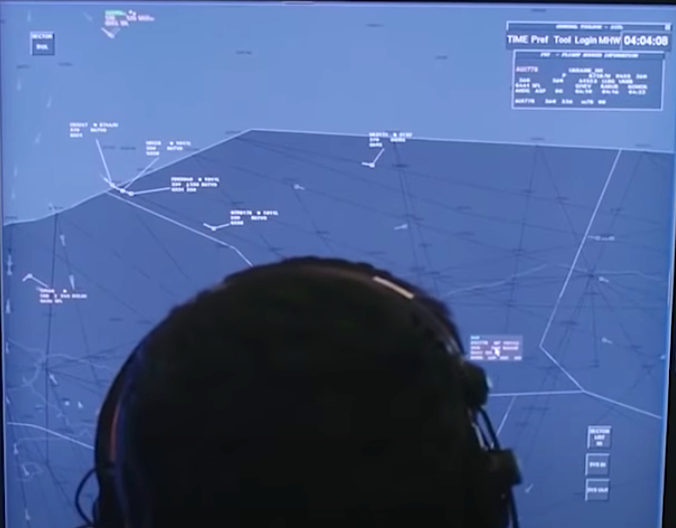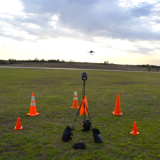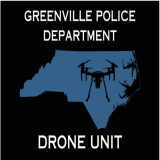
13 April 2023
Article Reprinted from MSN.com
See Original MSN version HERE.
With Unmanned Aircraft System (UAS) operations rapidly growing worldwide, there is a significant need to manage a variety of aircraft close to each other. This is particularly challenging in the lower airspaces around airports, which have long been used solely by commuter aircraft.
Urban Air Mobility (UAM) programs are taking shape, and developments from ongoing flight tests are pushing the limits of existing air traffic management systems. In the United States, several UAS operators have received their Part 135 air carrier certificates that enable them to perform payload-carrying commercial operations.
Airbus envisions that in the near future, thousands of aircraft will be populating low-level airspace across worldwide locations. Low-level airspace is generally defined as from the surface to approximately 3,000 ft (914 m) above mean sea level. The Federal Aviation Administration describes the low-level airspace as Class D airspace - generally from the surface to 2,500 feet (762 m) above the airport elevation.
Aircraft must establish two-way radio communications with the Air Traffic Control facility providing air traffic services before entering any airspace and subsequently maintain communication within the airspace.
Future aircraft will include helicopters, air taxis, delivery drones, and eVTOL aircraft. But, commuter airplanes already use lower airspace, particularly during climb and approach. The introduction of UAS in already-populated lower airspace, especially around busy airports, creates new challenges for Air Traffic Management (ATM).
Airbus and Boeing jointly released a document “A New Digital Era of Aviation: The Path Forward for Airspace and Traffic Management” to demonstrate Unmanned Traffic Management (UTM) and its use in future airspace and traffic management. The document states:
Existing Challenges
One of the most significant challenges is balancing the requests of two different types of vehicles in flight that are in conflict with each other. Interactions between UAS and traditional aircraft must be resolved during flight and will depend on several constraints, including environmental effects, security, and privacy. The management of such interactions requires proper allocation of resources.
Existing ATM systems require implementing those tailored for UAS, which ensures the compatibility of both traffic management systems. ATM and UTM alignment and integration require a complete understanding of both ecosystems, from products to procedures, systems, and human factors. A robust air traffic management infrastructure must be in place to safely manage various air vehicles.
Unmanned Traffic Management (UTM)
Airbus has established an Unmanned Traffic Management (UTM) system that will provide digital air traffic management solutions for the future of aviation. The UTM infrastructure is expected to offer digital and automated services which can pave the way for new capabilities and concepts of operation while working alongside and converging with current ATM advancements.
The UTM design team is keen to build on the existing air traffic management infrastructure to allow space for future vehicles. According to Airbus,
The guiding principles of the International Civil Aviation Organization (ICAO) suggest that airspace access should remain equitable among all stakeholders. Airbus’ UTM design ensures a system that guarantees fair access to all users. The distribution of delay across operators, driven by traffic density, must be handled fairly.
Framing the UTM Infrastructure
Airbus collaborates with regulators, manufacturers, service providers, and Urban Air Mobility (UAM) end-users to establish a common understanding of future airspace. Several use cases related to the interactions between air vehicles are simulated to demonstrate vehicle-specific requirements. The allocation of UTM resources is driven based on air vehicle requirements and environmental constraints to offer a fair, secure, and robust UTM infrastructure
The deployment of a comprehensive framework with services for flight authorization and authoritative data is possible through Airbus’ UTM platform. The safety and performance of the new UTM infrastructure are at the forefront of Airbus’ UTM team. The technology team conducts 4G and 5G network trials to evaluate safety and performance.
Moreover, the handling of two-way communication between aircraft, including unmanned ones, and the controller must be failsafe. The UTM team analyzes safety-critical communications within real-world environments in low-level airspace. Safety is ensured through multiple redundancies at the design (hardware) and technological (software) levels.
Airbus is taking a holistic approach, combining ATM and UTM, to build the air traffic control infrastructure needed for future operations. The amalgamation of the two networks will allow the seamless integration of unmanned aerial vehicles (UAVs) into the existing airspace.
The new UTM system will be compatible with the updated ATM network, enhancing the social acceptance of UAVs. Airbus and its industry partners also aim to assess solutions based on human factors, as it is one of the critical parameters for safe air traffic management operations.











